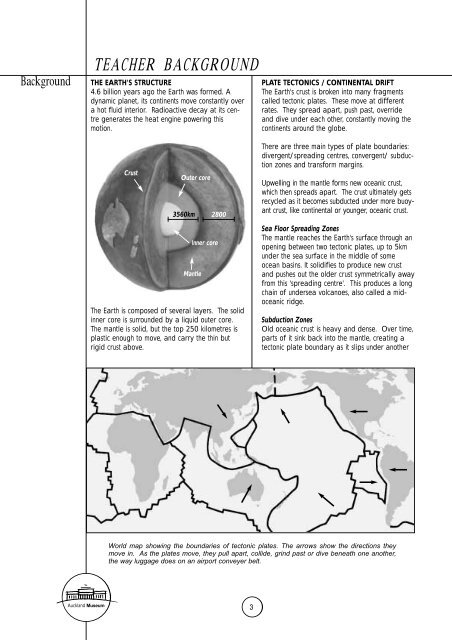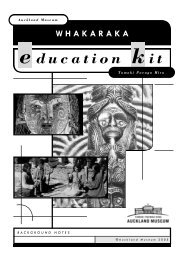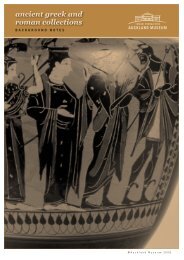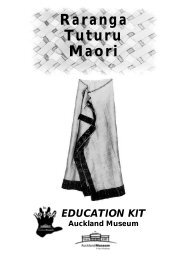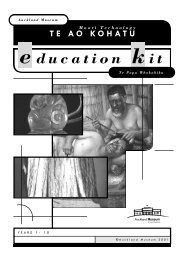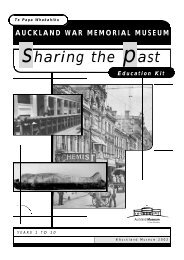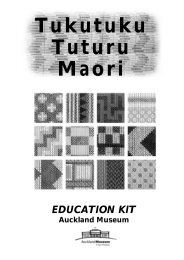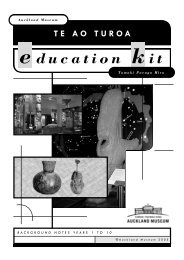Wanted: Oscar Obsidian - Auckland Museum
Wanted: Oscar Obsidian - Auckland Museum
Wanted: Oscar Obsidian - Auckland Museum
You also want an ePaper? Increase the reach of your titles
YUMPU automatically turns print PDFs into web optimized ePapers that Google loves.
Background<br />
TEACHER BACKGROUND<br />
THE EARTH'S STRUCTURE<br />
4.6 billion years ago the Earth was formed. A<br />
dynamic planet, its continents move constantly over<br />
a hot fluid interior. Radioactive decay at its centre<br />
generates the heat engine powering this<br />
motion.<br />
Crust<br />
Outer core<br />
3560km<br />
Inner core<br />
Mantle<br />
2800<br />
The Earth is composed of several layers. The solid<br />
inner core is surrounded by a liquid outer core.<br />
The mantle is solid, but the top 250 kilometres is<br />
plastic enough to move, and carry the thin but<br />
rigid crust above.<br />
<strong>Auckland</strong> <strong>Museum</strong> 3<br />
PLATE TECTONICS / CONTINENTAL DRIFT<br />
The Earth's crust is broken into many fragments<br />
called tectonic plates. These move at different<br />
rates. They spread apart, push past, override<br />
and dive under each other, constantly moving the<br />
continents around the globe.<br />
There are three main types of plate boundaries:<br />
divergent/spreading centres, convergent/ subduction<br />
zones and transform margins.<br />
Upwelling in the mantle forms new oceanic crust,<br />
which then spreads apart. The crust ultimately gets<br />
recycled as it becomes subducted under more buoyant<br />
crust, like continental or younger, oceanic crust.<br />
Sea Floor Spreading Zones<br />
The mantle reaches the Earth's surface through an<br />
opening between two tectonic plates, up to 5km<br />
under the sea surface in the middle of some<br />
ocean basins. It solidifies to produce new crust<br />
and pushes out the older crust symmetrically away<br />
from this 'spreading centre'. This produces a long<br />
chain of undersea volcanoes, also called a midoceanic<br />
ridge.<br />
Subduction Zones<br />
Old oceanic crust is heavy and dense. Over time,<br />
parts of it sink back into the mantle, creating a<br />
tectonic plate boundary as it slips under another<br />
World map showing the boundaries of tectonic plates. The arrows show the directions they<br />
move in. As the plates move, they pull apart, collide, grind past or dive beneath one another,<br />
the way luggage does on an airport conveyer belt.


